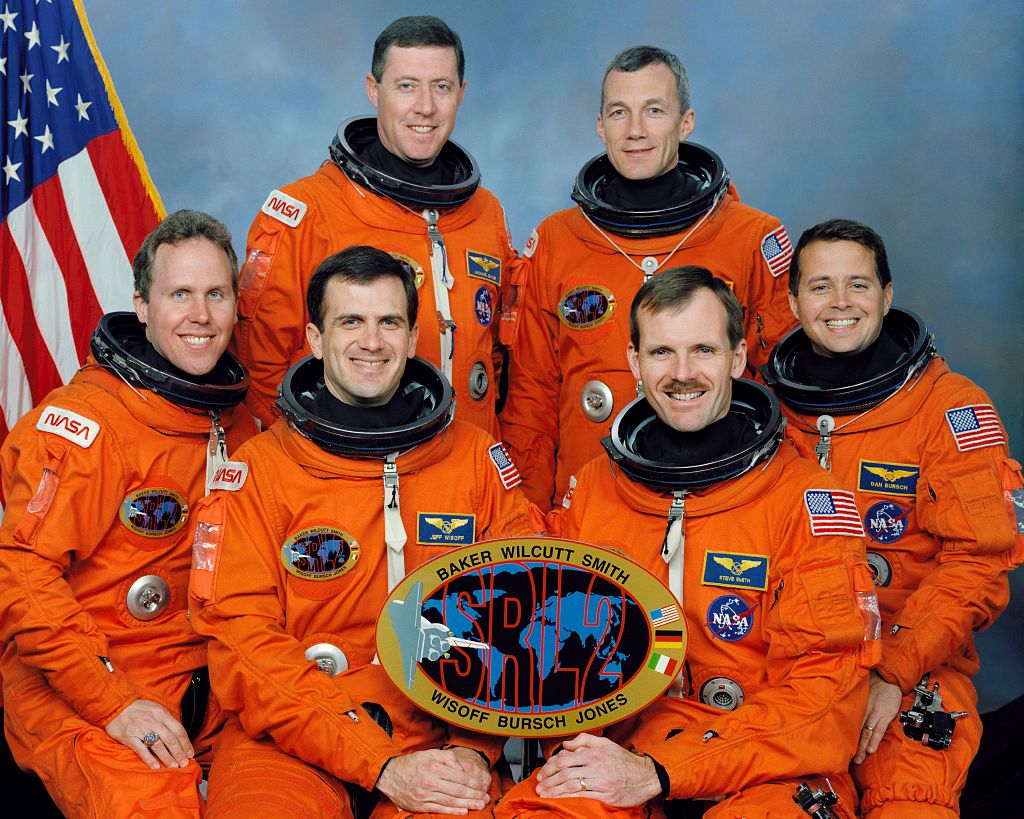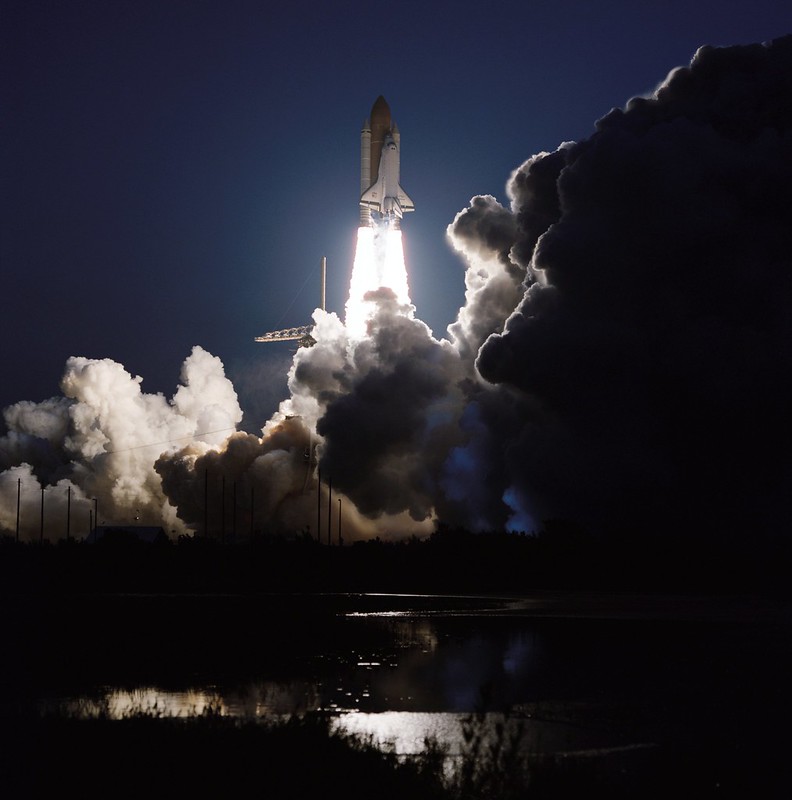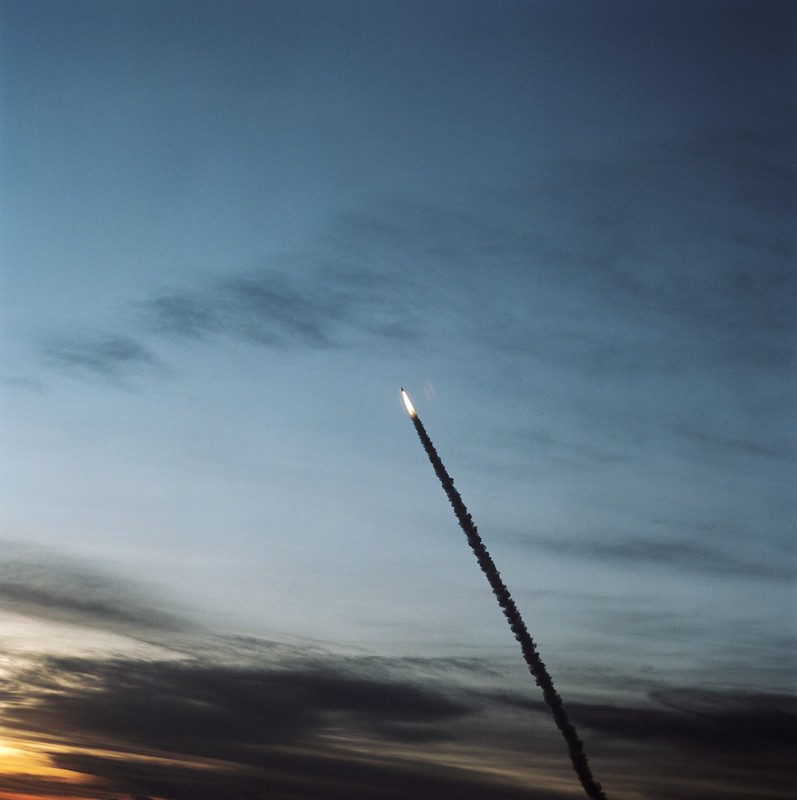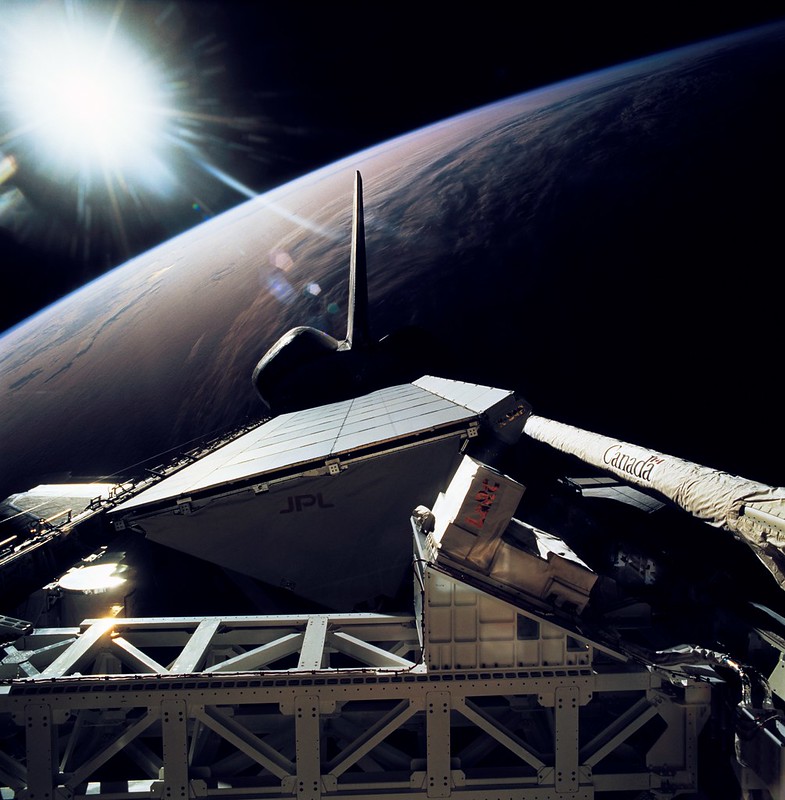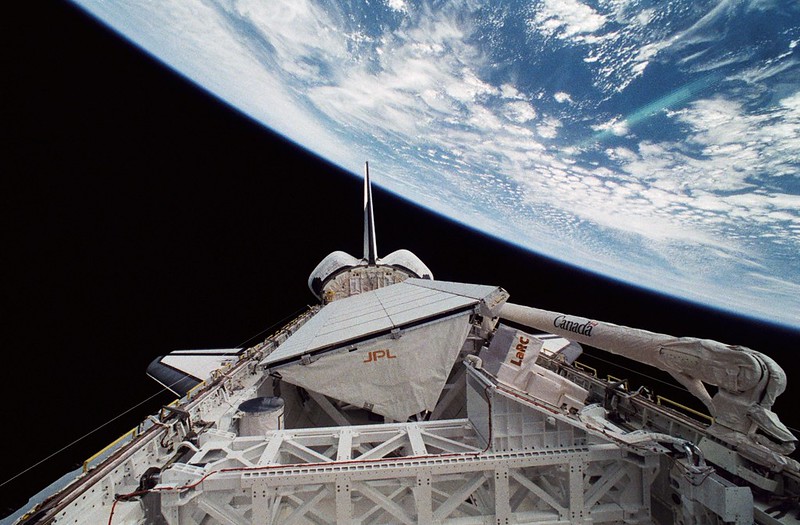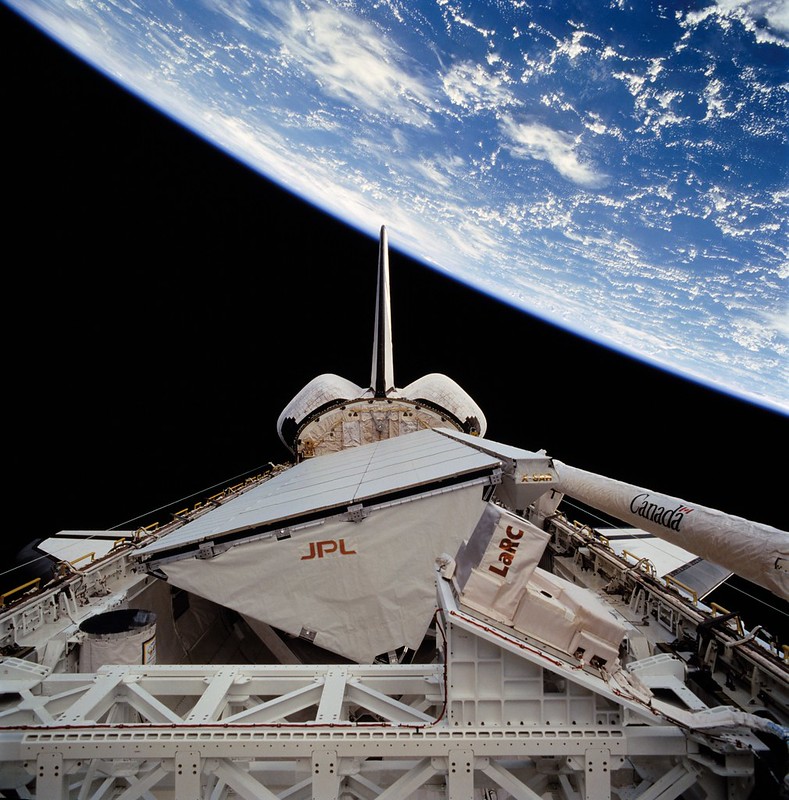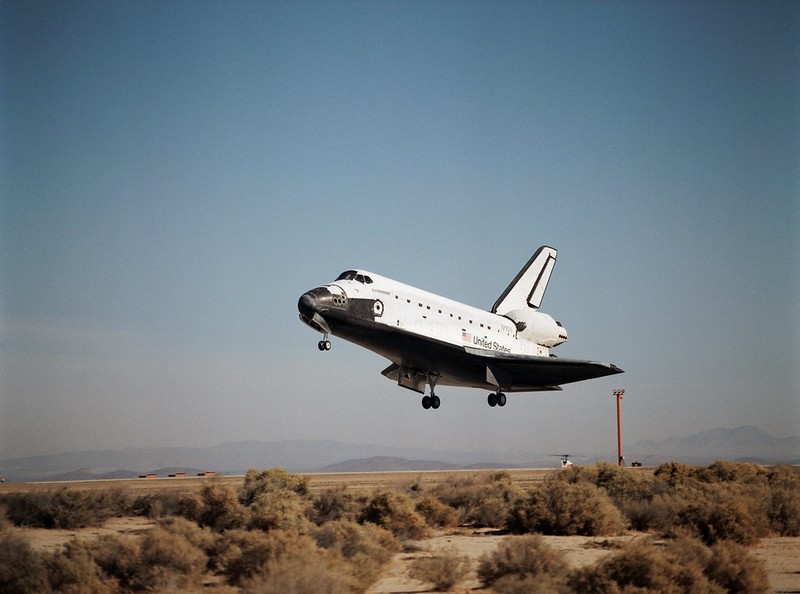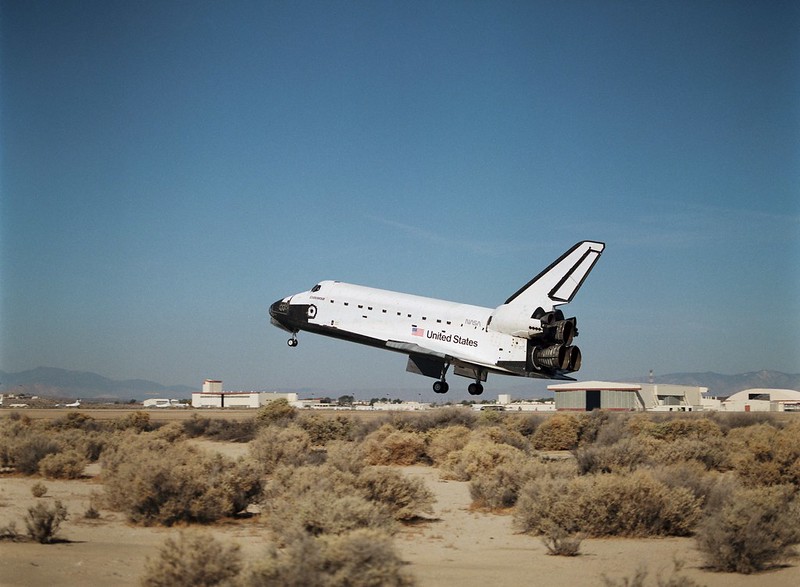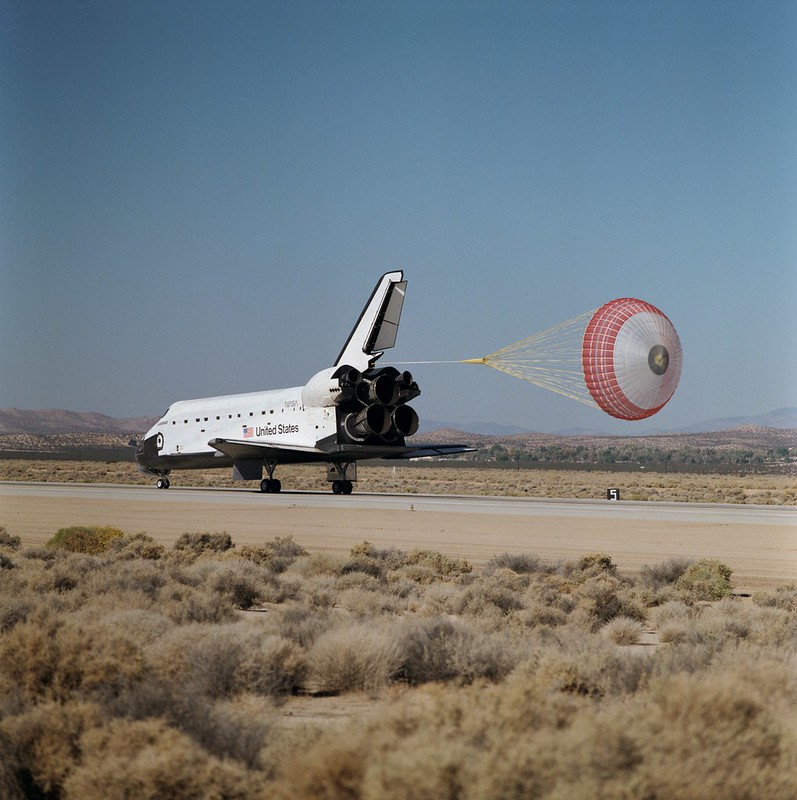STS-68 Fact Sheet
By Cliff Lethbridge

STS-68 — Endeavour
65th Space Shuttle Mission
7th Flight of Endeavour
Crew:
Michael A. Baker, Commander
Terrence W. Wilcutt, Pilot
Thomas D. Jones, Payload Commander
Daniel W. Bursch, Mission Specialist
Peter J.K. Wisoff, Mission Specialist
Steven L. Smith, Mission Specialist
Orbiter Preparations:
Tow to Orbiter Processing Facility – May 2, 1994
Rollover to Vehicle Assembly Building – July 21, 1994
Rollout to Launch Pad 39A – July 27, 1994
Rollback to Vehicle Assembly Building – August 24, 1994
Rollout to Launch Pad 39A – September 13, 1994
Launch:
September 30, 1994 – 7:16:00 a.m. EDT. First launch attempt on August 18, 1994 was scrubbed by orbiter computers at T-1.9 seconds due to the detection of an unacceptably high discharge temperature in the high-pressure oxidizer turbopump turbine for Main Engine Number Three.
Endeavour was returned to the Vehicle Assembly Building where all three main engines were replaced. September 30 launch occurred as scheduled with no delays.
Landing:
October 11, 1994 – 10:02:08 a.m. PDT at Runway 22, Edwards Air Force Base, California. Rollout distance was 8,495 feet. Rollout time was 60 seconds. Mission duration was 11 days, 5 hours, 46 minutes, 8 seconds. Landing occurred during the 183rd orbit.
Landing was diverted to Edwards Air Force Base due to poor weather at the Kennedy Space Center. Water dripped from the centerline latch for the orbiter/external tank doors following the landing. A crack was later discovered in a water spray boiler.
Mission Summary:
This was the second flight in 1994 of the Space Radar Laboratory (SRL-2), flown previously on STS-59. Flying the same basic payload in the same year allowed scientists to examine regions of Earth during different seasons.
It also allowed examination of fires set in British Columbia, Canada for forest management purposes. Scientific readings were taken with great accuracy, as at one point Endeavour flew in an orbital path just 30 feet away from where it flew during STS-59.
Other payloads included five GAS experiment containers, including two from the U.S. Postal Service in which 500,000 commemorative stamps honoring the 25th anniversary of Apollo 11 were carried.
Also flown were Commercial Protein Crystal Growth (CPCG), Biological Research in Canisters (BRIC-01), CHROMEX-05, Cosmic Radiation Effects and Activation Monitor (CREAM) and Military Applications of Ship Tracks (MAST).
Problems included a missing tile around an overhead window, a suspect temperature sensor in the Reaction Control System (RCS) vernier thruster which led to temporary cessation of SRL-2 radar observations and failure of a primary RCS thruster.
SELECTED NASA PHOTOS FROM STS-68
